Say No!!! to YES 4G???
Just saw a new Facebook fanpage saying 'NO' to YES 4G
http://www.facebook.com/pages/Say-No-to-YES-4G/146687448712288
Ok, let's go to the 4G argument first.
4G is the short name for fourth-generation wireless, the stage of mobile communications that will enable things like IP-based voice, data, gaming services and high quality streamed multimedia on portable devices with cable modem-like transmission speeds. It's a successor to 2G and 3G wireless, whereby the first signified the shift from analog to digital transmissions, bringing data services like SMS and email to mobile phones for the first time, and the second refers to the advent of things like global roaming as well as higher data rates.
Think of wireless generations as a handful of services that get faster and more feature-rich as newer technology becomes available. The 3G networks that we use today allow us to stream video, download music and files, and surf the web at average download speeds from 600Kb/s to 1.4Mb/s. With 4G you'll be able to do the same but at much faster rates, while the extra bandwidth opens the door for newer applications.
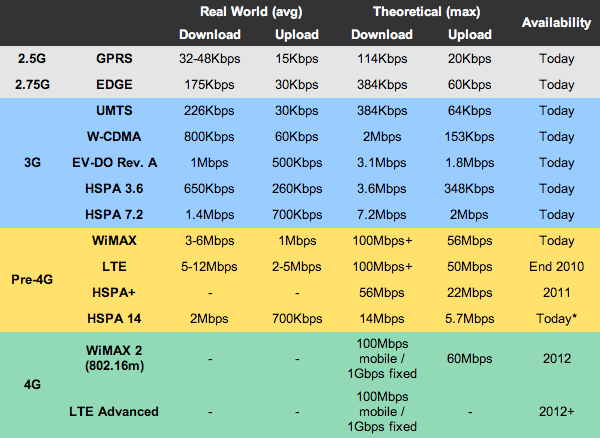
There are a number of standards and technologies pertaining to each wireless generation -- GSM, cdmaOne, GPRS, EDGE, CDMA2000, UMTS (also marketed as 3GSM), HSDPA, among others. For practical reasons, we won't be dwelling on the technicalities of each term and instead will move onto the ones that involve our topic of interest here: 4G.
Although no set of standards have been established as of yet by the International Telecommunication Union (ITU), the authority on such things, two competing technologies have been proposed: LTE and WiMAX. Many service providers often use the term 4G mobile broadband to describe the technologies they are offering based on their own, sometimes distorted definitions. However, current implementations are largely considered pre-4G, as they don't fully comply with the planned requirements of 1Gbit/s for stationary reception and 100Mbit/s for mobile.
Besides speed, several other guidelines have been traced for wireless communication standards to qualify as 4G. In a nutshell, they should be very spectrally efficient, should dynamically share and utilize the network resources to support more simultaneous users per cell, have smooth handovers across heterogeneous networks, offer high quality of service for next generation multimedia support, and should be based on an all-IP packet switched network.
LTE is being developed by a group of telecommunications associations known as the 3rd Generation Partnership Project, or 3GPP, as an eight release of what has been evolving since 1992 from the GSM family of standards.
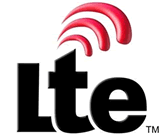
Many big-name global operators and mobile communications companies are backing LTE in the race for 4G mobile broadband, including Vodafone, Orange, T-Mobile, LG Electronics, Ericsson, Nokia, Siemens, NTT DoMoCo, and others. In the U.S., Verizon Wireless has said it is going commercial with its LTE network in the fourth quarter, with 25 to 30 markets up and ready at launch. AT&T and T-Mobile claim they will begin to deploy LTE in 2011, but in the meantime both networks have moved to HSPA 7.2 and the latter plans to roll out HSPA+ beginning this year. Theoretically these can support speeds of up to 7.2 and 21 Mbps, respectively, but in real world scenarios they are only marginally faster than most 3G data services.
The reason behind LTE’s strong industry support lies in the relative ease of upgrading from current 3G networks worldwide over to LTE mobile broadband, compared to the significant infrastructure build out that WiMAX has taken thus far. Fewer cell sites have to be built and penetration into buildings is better at the 700 MHz spectrum LTE uses. However, WiMAX deployments are already up and running while LTE's formal debut is still a few months out.
Again, "theoretical" is the keyword here as WiMAX, like all wireless technologies, can either operate at higher bitrates or over longer distances but not both. Production networks being operated in the United States are seeing average speeds go from 3 to 6Mb/s, with bursts up to 10Mb/s. Like LTE -- and Wi-Fi 802.11n for that matter -- WiMAX supports MIMO technology, which means that additional antennas can increase the potential throughput.

In terms of total available 4G spectrum to deploy their services, Clearwire has several times more than its competitors, which have smaller portions of the 700 MHz band. However, Verizon and AT&T are not too worried about this as they can re-utilize spectrum being used right now for 2G and 3G services by upgrading these to LTE when the demand is there.
Furthermore, as mentioned earlier, the 700 MHz band that both Verizon and AT&T plan to use has enormously better range and penetration of buildings than the same power of signal at 2.5 GHz. Some experts have said that 700MHz will require as few as one-quarter as many base stations to offer identical coverage to 2.5 GHz.
As you might have guessed, the industry players behind these 4G technologies reflect the history of each standard. Whereas LTE biggest supporters are, in general, telecommunication service companies and handset manufacturers, WiMAX counts the likes of Intel, Cisco and Google among its most important backers. It should be noted though that many companies like Nokia or Motorola are members of both industry groups, with different levels of involvement.
http://www.facebook.com/pages/Say-No-to-YES-4G/146687448712288
Ok, let's go to the 4G argument first.
4G is the short name for fourth-generation wireless, the stage of mobile communications that will enable things like IP-based voice, data, gaming services and high quality streamed multimedia on portable devices with cable modem-like transmission speeds. It's a successor to 2G and 3G wireless, whereby the first signified the shift from analog to digital transmissions, bringing data services like SMS and email to mobile phones for the first time, and the second refers to the advent of things like global roaming as well as higher data rates.
Think of wireless generations as a handful of services that get faster and more feature-rich as newer technology becomes available. The 3G networks that we use today allow us to stream video, download music and files, and surf the web at average download speeds from 600Kb/s to 1.4Mb/s. With 4G you'll be able to do the same but at much faster rates, while the extra bandwidth opens the door for newer applications.

There are a number of standards and technologies pertaining to each wireless generation -- GSM, cdmaOne, GPRS, EDGE, CDMA2000, UMTS (also marketed as 3GSM), HSDPA, among others. For practical reasons, we won't be dwelling on the technicalities of each term and instead will move onto the ones that involve our topic of interest here: 4G.
Although no set of standards have been established as of yet by the International Telecommunication Union (ITU), the authority on such things, two competing technologies have been proposed: LTE and WiMAX. Many service providers often use the term 4G mobile broadband to describe the technologies they are offering based on their own, sometimes distorted definitions. However, current implementations are largely considered pre-4G, as they don't fully comply with the planned requirements of 1Gbit/s for stationary reception and 100Mbit/s for mobile.
Besides speed, several other guidelines have been traced for wireless communication standards to qualify as 4G. In a nutshell, they should be very spectrally efficient, should dynamically share and utilize the network resources to support more simultaneous users per cell, have smooth handovers across heterogeneous networks, offer high quality of service for next generation multimedia support, and should be based on an all-IP packet switched network.
LTE
Short for Long-Term Evolution, LTE is considered by many to be the natural successor to current-generation 3G technologies, in part because it updates UMTS networks to provide significantly faster data rates for both uploading and downloading. The specification calls for downlink peak rates of at least 100Mb/s and an uplink of 50Mb/s, but going by real world tests its transfer speeds will more likely range from 5-12Mb/s for downloads and 2-5Mb/s for uploads. LTE is being developed by a group of telecommunications associations known as the 3rd Generation Partnership Project, or 3GPP, as an eight release of what has been evolving since 1992 from the GSM family of standards.

Many big-name global operators and mobile communications companies are backing LTE in the race for 4G mobile broadband, including Vodafone, Orange, T-Mobile, LG Electronics, Ericsson, Nokia, Siemens, NTT DoMoCo, and others. In the U.S., Verizon Wireless has said it is going commercial with its LTE network in the fourth quarter, with 25 to 30 markets up and ready at launch. AT&T and T-Mobile claim they will begin to deploy LTE in 2011, but in the meantime both networks have moved to HSPA 7.2 and the latter plans to roll out HSPA+ beginning this year. Theoretically these can support speeds of up to 7.2 and 21 Mbps, respectively, but in real world scenarios they are only marginally faster than most 3G data services.
The reason behind LTE’s strong industry support lies in the relative ease of upgrading from current 3G networks worldwide over to LTE mobile broadband, compared to the significant infrastructure build out that WiMAX has taken thus far. Fewer cell sites have to be built and penetration into buildings is better at the 700 MHz spectrum LTE uses. However, WiMAX deployments are already up and running while LTE's formal debut is still a few months out.
WiMAX
WiMAX is a wireless broadband access standard developed and maintained by the IEEE under the 802.16 designation. As its name suggest, WiMAX can be thought of as an extension of Wi-Fi designed to enable pervasive, high-speed mobile Internet access on a wide range of devices, from laptops to smartphones. The current implementation is based on the 802.16e specification which offers theoretical downlink rates upwards of 70Mbps and up to 30-mile ranges. Again, "theoretical" is the keyword here as WiMAX, like all wireless technologies, can either operate at higher bitrates or over longer distances but not both. Production networks being operated in the United States are seeing average speeds go from 3 to 6Mb/s, with bursts up to 10Mb/s. Like LTE -- and Wi-Fi 802.11n for that matter -- WiMAX supports MIMO technology, which means that additional antennas can increase the potential throughput.

In terms of total available 4G spectrum to deploy their services, Clearwire has several times more than its competitors, which have smaller portions of the 700 MHz band. However, Verizon and AT&T are not too worried about this as they can re-utilize spectrum being used right now for 2G and 3G services by upgrading these to LTE when the demand is there.
Furthermore, as mentioned earlier, the 700 MHz band that both Verizon and AT&T plan to use has enormously better range and penetration of buildings than the same power of signal at 2.5 GHz. Some experts have said that 700MHz will require as few as one-quarter as many base stations to offer identical coverage to 2.5 GHz.
As you might have guessed, the industry players behind these 4G technologies reflect the history of each standard. Whereas LTE biggest supporters are, in general, telecommunication service companies and handset manufacturers, WiMAX counts the likes of Intel, Cisco and Google among its most important backers. It should be noted though that many companies like Nokia or Motorola are members of both industry groups, with different levels of involvement.

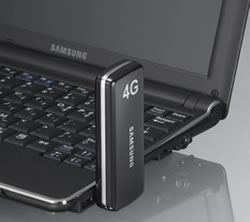
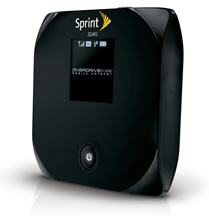
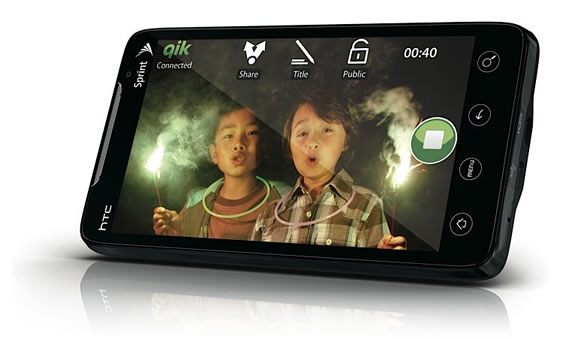
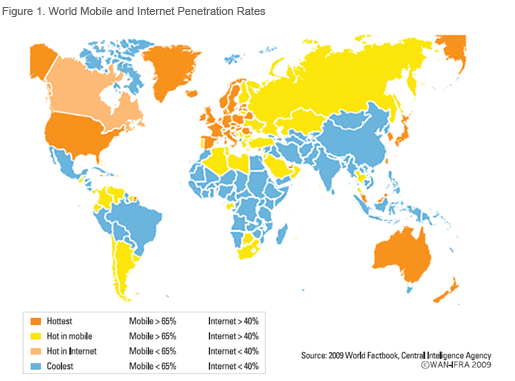


Comments
Post a Comment